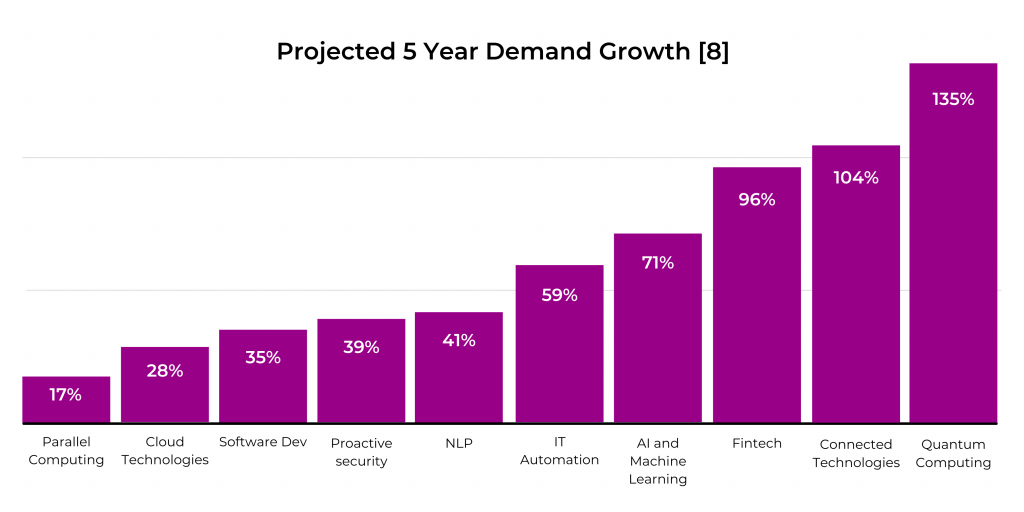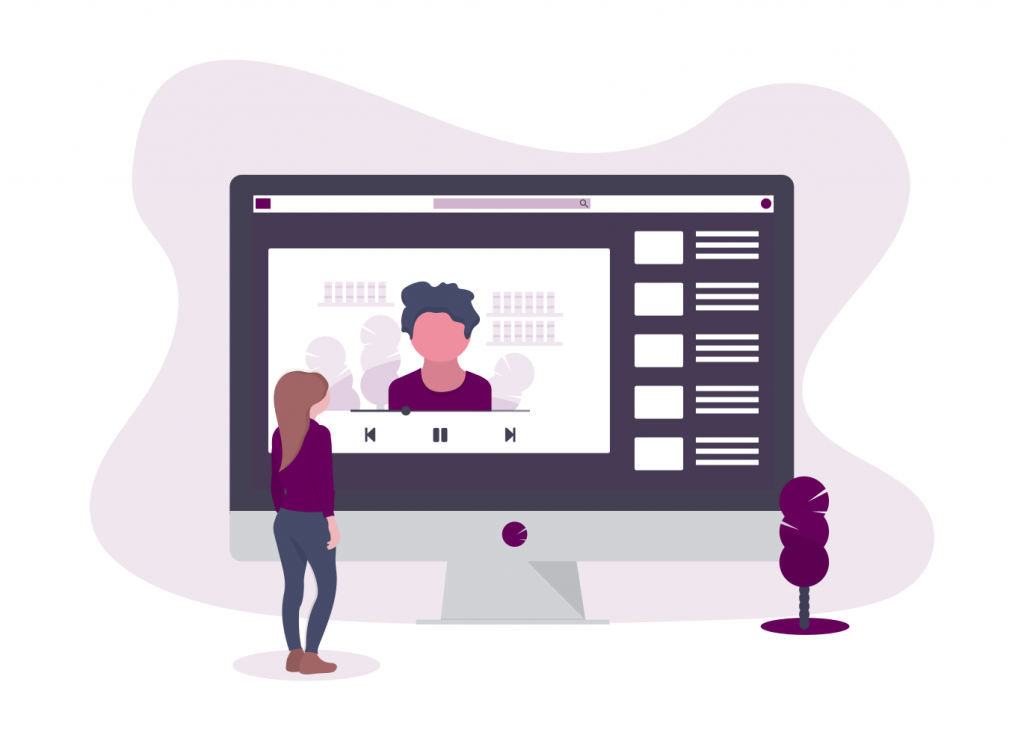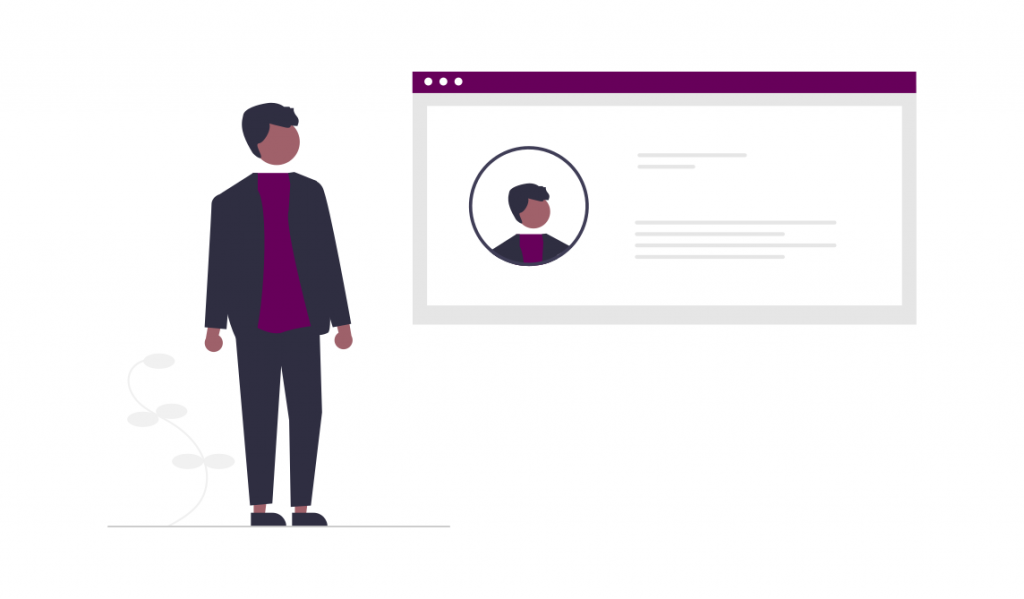 Back
Back

Industry 4.0 is here now. Once the realm of science fiction, modern production is characterized by the use of smart technologies that result in efficiency, accuracy, and even autonomous operation and decision-making.
To create Industry 4.0-level operations, digitalization is required. This is all possible with advanced, interconnected technological infrastructures and recent developments in high-speed mobile internet, artificial intelligence (AI), machine learning, automation, use of big data analytics, internet of things (IoT), and cloud technology [1].
Why are companies reluctant to begin Industry 4.0 transformation? One study found that “CEOs are increasingly concerned about the speed of technological change: 76% see it as a threat to their growth prospects and 38% are extremely worried (up 29% in 12 months)” [2]. However, the benefits of transformation outweigh the cons. The advanced technological infrastructure of an Industry 4.0 business model creates smart businesses that reap massive benefits. Collectively, these advanced technologies are enabling a revolution that will rapidly advance the businesses that employ them.

Smart factories generate increased profitability, productivity, and manufacturing flexibility and customizability; greater efficiency, insight, control, and data visibility across their entire supply chain; faster delivery of products and services to market; higher quality products at a cheaper cost; and reduced errors and delays, through use of predictive maintenance capabilities powered by analytics [3]. These benefits will result in massive savings and revenue generation for companies that are quick to adapt. The global Industry 4.0 market was valued at $70 billion in 2019, and tremendous growth is expected in the upcoming years. By 2026, Industry 4.0 market is expected to reach $210 billion with a compound annual growth rate (CAGR) of 17% from 2019 to 2026 [4].
Deloitte reports that "businesses with comprehensive Industry 4.0 strategies believe they are far more successful across multiple dimensions, including measures related to financial performance, societal impact, talent, and technology investment" [5]. Despite the apparent benefits, a PwC study on Industry 4.0 showed that only 10% of global manufacturing companies have a highly developed and wholly adapted Industry 4.0 strategy. And about 66% of companies are just beginning their transformative journey to fully embrace Industry 4.0 practices and create smart companies [6]. This data shows that businesses with foresight have the opportunity to get ahead of their competition and grab market share from slower competitors. Additionally, it shows that substantial transformation of workforces is yet to come.
The PwC study highlights that skilled labor will be the limiting factor in this transformative movement, citing: "No people, no transformation" [7]. The massive global skills gap can make finding the skilled labor to implement this transformation a challenge. PwC reports that manufacturing companies with high technology investment in Industry 4.0 have focused on upskilling and increased internal mobility as their primary job feed method. Upskilling and retraining current employees is an excellent way to get ahead of competitors and more swiftly implement Industry 4.0 practices at your company.

Industry 4.0 has further-reaching implications for the global labor market than the current lack of skilled workers. The technological transformation that accompanies digitalization and the foundation of Industry 4.0 infrastructure disrupts labor markets worldwide. The components of this transformation expected to have the most significant impact on global workforces are AI and automation [9]. A McKinsey Global Institute study finds that the adoption of AI and automation will impact about 30% of the global workforce. This is a conservative number because they estimate that 50% of work is automatable with current technology [10]. Companies have similar beliefs about the disruption of AI and automation of the workforce. 50% of companies believe that by 2022, automation will decrease their numbers of full-time staff, and by 2030, automation will replace 800 million workers globally [11]. This looks like a bleak outcome for workers in the manufacturing, logistic, and related industries. However, The World Economic Forum reports that 38% of businesses believe AI and automation technology will allow employees to pivot to productivity-enhancing jobs, and 25% believe new roles will be created to support these advanced systems [12]. In 2020, the global AI market size was valued at $62.35 B and is expected to grow 40.2% between 2021 and 2028 [13]. To enable transitioning current employees to different or new roles, a robust online learning platform that comprehensively upskills your workforce can become an incredible asset and provide strategic advantages for your company.
How Can You Launch an Online Learning Platform to Support Industry 4.0 Transformations in the Workplace?

Companies that are serious about transforming into Industry 4.0 compliant businesses should start right away. There is an opportunity to get ahead of competitors and establish dominion on a large share of the market before slower companies catch up. The way to fuel this swift transformation is through upskilling. There is not enough skilled labor in the global labor market to hire enough new employees to support this transition, especially as positions are transitioned out. Upskilling and internal mobility at your company is the smart way to fill positions quickly and transform efficiently. As employee's positions are eliminated due to automation, upskill and reskill them to fit the new needs of your workforce. Providing your workforce with comprehensive and world-class training is easier than you think. Partner with an online learning ecosystem provider and meet your needs with ease.
Here are key elements that online learning platforms need to provide value to your company and employees:


If your company can adapt quickly to Industry 4.0 standards, great profit will be made, and your business practices will be revolutionized. Industry 4.0 is the future, and it is time to start transforming.
Amesite Offers a Single, Easy to Use, Scalable Solution
Launch an upskilling program that helps your workforce prepare for Industry 4.0, so your company can take its share of the market, increase productivity, and increase transparency throughout your operations.
Amesite is the premier online learning ecosystem provider on the market today. We are well-positioned to provide your business with what it needs to prepare the workforce of the future.

Amesite's platform is high-tech and AI-powered. We specialized in scalable, custom branded online learning environments and content curation to meet employer's unique needs and support the business's upskilling efforts. Artificial Intelligence drives some of the most compelling experiences on the internet, and Amesite brings these tools to education in a novel and transformative way.
Amesite's platform offers excellent insights to learners and employers using advanced data analytics, unparalleled ease of use, features that build communication and engagement, and provides compelling custom content.

Amesite's product is easy to acquire, use, scale, and offers:


Amesite has experience curating course content and robust online learning platforms in fields relating to Industry 4.0. Farshad Fotouhi, Dean of Wayne State University College of Engineering and a collegiate partner of Amesite, discusses the platform and content created for his university: "Course topics around mobility, communication between vehicles and infrastructure, vehicle-to-vehicle [communication], electrification technology, manufacturing, and industry 4.0 technology – these are constantly evolving," Fotouhi said. "With the [Amesite] platform, they can look at the literature and news articles and share those with students so they can be up to date and provided with context about that" [14].
Amesite creates outstanding learning experiences delivered on its advanced platform, providing an excellent user experience for employees. Using AI and advanced analytics to provide fresh content creates an important context for learning. Coupled with outstanding services, these experiences deepen professionals' interest in subjects important to their company's goals. Amesite's unprecedented retention rate in the enterprise sector is 100%.
Let Amesite help your company upskill today! Request a Demo!
Check out some of our customer success stories: The Henry Ford, Wayne State University.
Don't forget to subscribe below and follow us on social to be the first to know about new resources, updates, news, and more! Find Amesite on: Twitter, Facebook, LinkedIn, and Instagram!
Resources:
[1] Change. 2018. How Will the Fourth Industrial Revolution Impact the Future of Work? https://www.changerecruitmentgroup.com/knowledge-centre/how-will-the-fourth-industrial-revolution-impact-the-future-of-work Accessed April 27, 2021.
[2] PwC. 2018. 21st CEO Survey The talent challenge: Rebalancing skills for the digital age. https://www.pwc.com/gx/en/ceo-survey/2018/deep-dives/pwc-ceo-survey-talent.pdf. Accessed October 14, 2021.
[3] Epicor. What is Industry 4.0—the Industrial Internet of Things (IIoT)? https://www.epicor.com/en-us/resource-center/articles/what-is-industry-4-0/ Accessed April 27, 2021.
[4] Global News Wire. Dec. 10, 2020. Industry 4.0 Market Size Growth Will Reach USD 210 Billion by 2026: Facts & Factors. https://www.globenewswire.com/news-release/2020/12/10/2143051/0/en/Industry-4-0-Market-Size-Growth-Will-Reach-USD-210-Billion-by-2026-Facts-Factors.html Accessed April 27, 2021.
[5] iScoop. Industry 4.0: the fourth industrial revolution – guide to Industrie 4.0. https://www.i-scoop.eu/industry-4-0/#:~:text=Industry%204.0%20is%20the%20current,called%20a%20%E2%80%9Csmart%20factory%E2%80%9D. Accessed April 27, 2021.
[6] PwC. 2019. The Lost Workforce Upskilling for the Future. https://www.pwc.com/m1/en/world-government-summit/documents/wgs-lost-workforce.pdf Accessed April 27, 2021.
[7] PwC. 2019. The Lost Workforce Upskilling for the Future. https://www.pwc.com/m1/en/world-government-summit/documents/wgs-lost-workforce.pdf Accessed April 27, 2021.
[8] Burning Glass Technologies. December 2020. Skills of Mass Disruption: Pinpointing the 10 Most Disruptive Skills in Tech. https://f.hubspotusercontent00.net/hubfs/4906807/Skills-of-Mass-Disruption-Report-December-2020.pdf. Accessed October 12, 2021.
[9] Change. 2018. How Will the Fourth Industrial Revolution Impact the Future of Work? https://www.changerecruitmentgroup.com/knowledge-centre/how-will-the-fourth-industrial-revolution-impact-the-future-of-work Accessed April 27, 2021.
[10] Mckinsey. Nov. 28, 2017. Jobs lost, jobs gained: What the future of work will mean for jobs, skills, and wages. https://www.mckinsey.com/featured-insights/future-of-work/jobs-lost-jobs-gained-what-the-future-of-work-will-mean-for-jobs-skills-and-wages Accessed April 27, 2021.
[11] Change. 2018. How Will the Fourth Industrial Revolution Impact the Future of Work? https://www.changerecruitmentgroup.com/knowledge-centre/how-will-the-fourth-industrial-revolution-impact-the-future-of-work Accessed April 27, 2021.
[12] Change. 2018. How Will the Fourth Industrial Revolution Impact the Future of Work? https://www.changerecruitmentgroup.com/knowledge-centre/how-will-the-fourth-industrial-revolution-impact-the-future-of-work Accessed April 27, 2021.
[13] Grand View Research. June 2021. Artificial Intelligence Market Size, Share & Trends Analysis Report By Solution, By Technology. https://www.grandviewresearch.com/industry-analysis/artificial-intelligence-ai-market. Accessed October 12, 2021.
[14] Gov Tech. April 23, 2021. Amesite Platform for Wayne State Uses AI to Find Content. https://www.govtech.com/education/higher-ed/amesite-platform-for-wayne-state-uses-ai-to-find-content Accessed April 27, 2021.